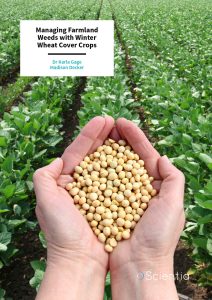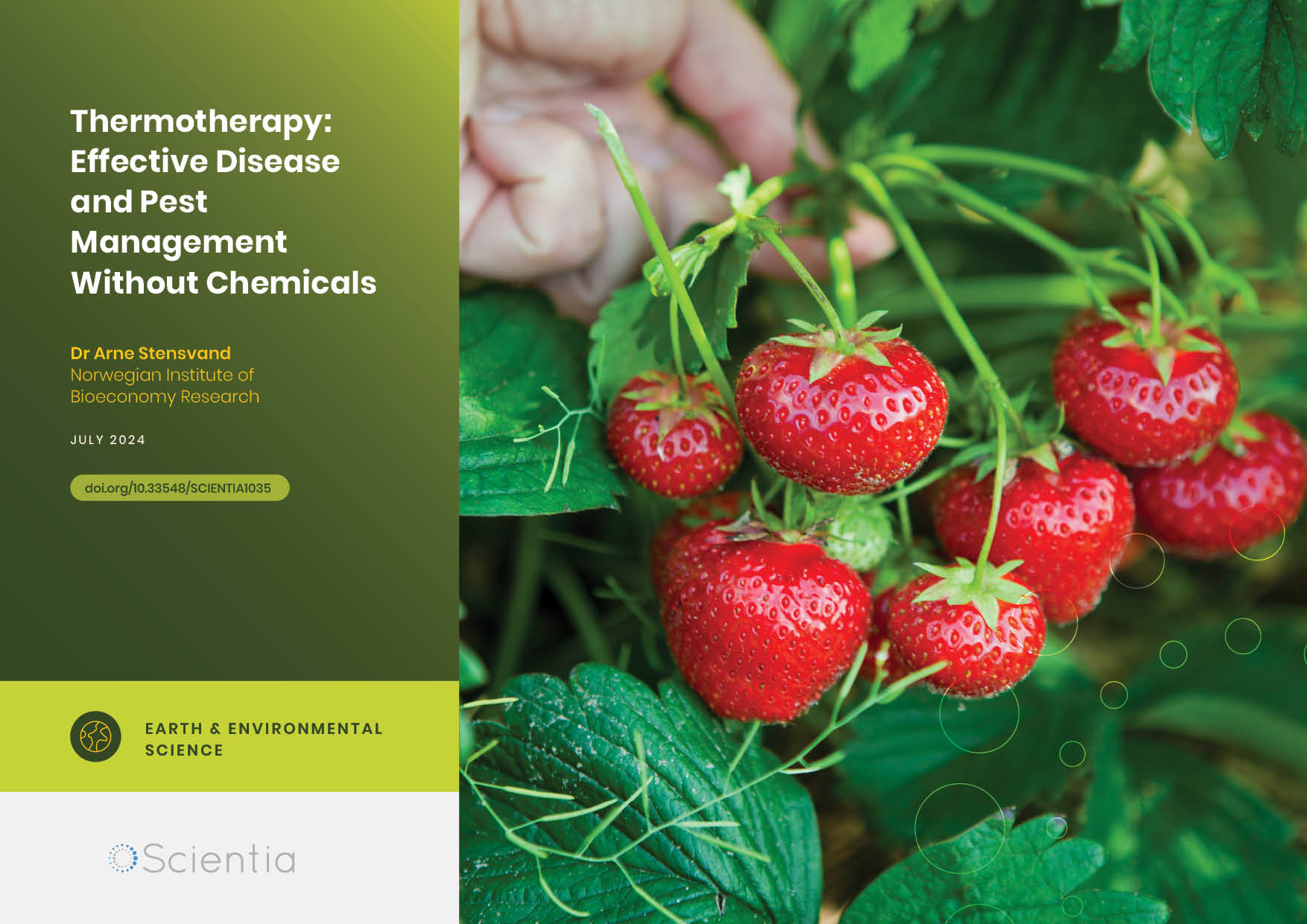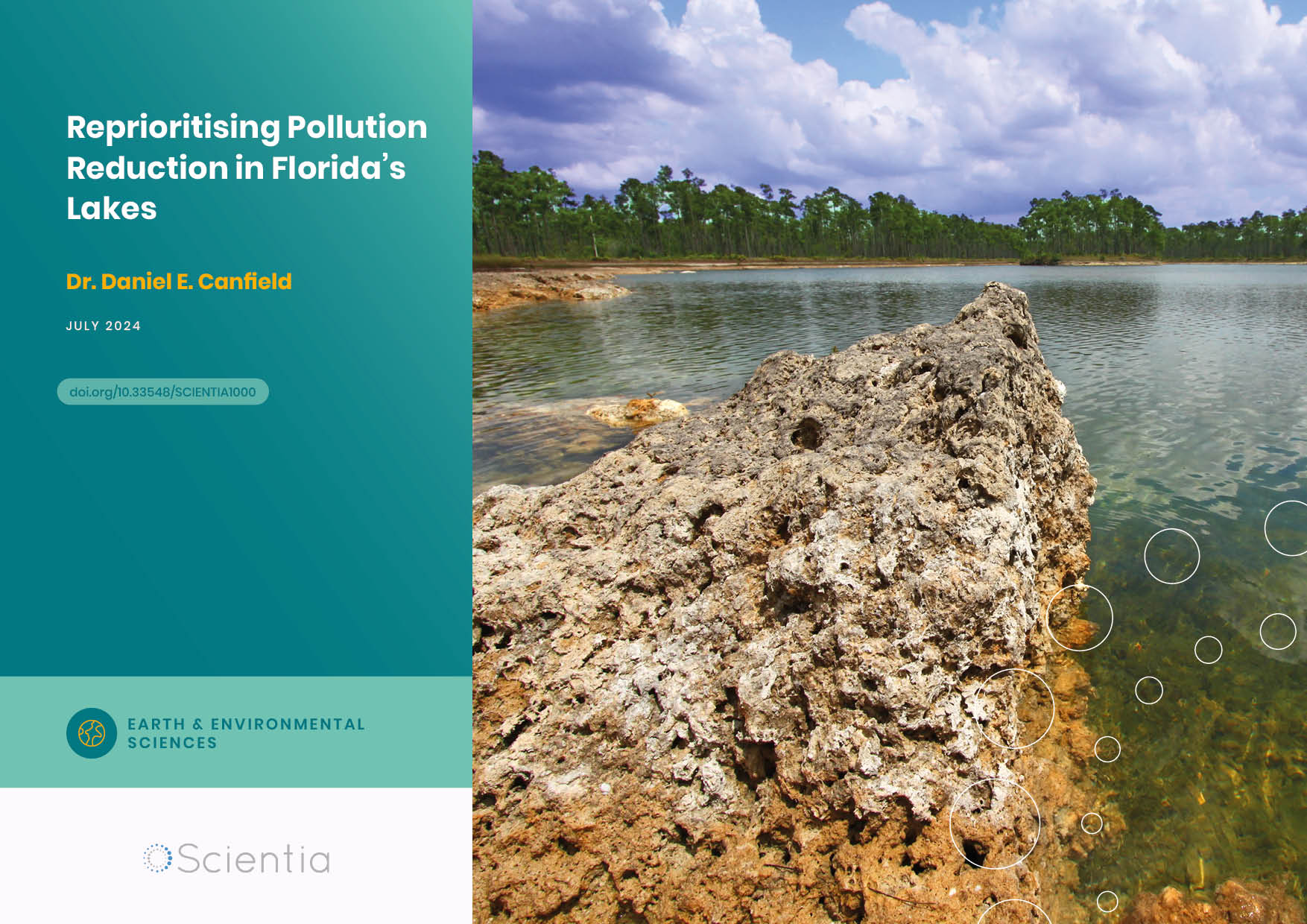Dr Karla Gage – Ms Madison Wozniak | Managing Farmland Weeds with Winter Wheat Cover Crops
Weed management on farms is important for increasing not just the overall yield but also the nutrient value of crops. Dr Karla Gage and Ms Madison Wozniak, both from Southern Illinois University, propose a new weed management strategy in which winter wheat is sown alongside soybeans in spring. Importantly, the project is conducted in collaboration with local farmers, confirming the importance of farmer-scientist relationships in progressing agronomic science.
Soybean Competition
Soybeans are grown commercially in southern Illinois and Indiana, but fields are often blighted with weeds such as common waterhemp (Amaranthus), which reduce the growth and nutrient content of soybeans through competition. Dr Karla Gage and co-researcher Ms Madison Wozniak aimed to develop a more sustainable weed management strategy for farmers to improve their growing practices.
The proposed method requires winter wheat to be sown in spring when soybeans are planted in a process known as interseeding. The winter wheat acts as a cover crop, shielding the soybeans during their vegetative growth stage. Since the winter wheat is planted in the spring, it is unable to be vernalised (exposed to low temperatures to encourage growth), which reduces its capability to grow beyond the Feekes (an objective measure of growth and development) 5 vegetative growth stage. This means the winter wheat will never enter reproductive phases and will only grow in the understory of the soybean crop.
Field Testing the Proposed Strategy
To field test their proposed weed management method, the researchers recruited three farms to implement the initiative during their next growing season. Farmers used drop spreading to distribute winter wheat at 3,706,500 seeds per hectare in early to mid-April, incorporating seeds into the soil before planting soybeans. Once any weeds grew between 10 and 15 cm tall and soybeans were at the Feekes V3–V4 growth stage, they were sprayed with herbicide to prevent further growth and subsequent competition with the soybean crop.
Various combinations of this process were trialled over 1- to 2-hectare fields to assess the most effective strategy for growers. The ground was prepared with a glyphosate treatment to remove any winter weeds already present. Field areas were then either (a) planted with soybeans and treated with pre- and post-emergent herbicide; (b) planted with soybeans and only treated with post-emergence herbicide; (c) planted with soybeans and inter-seeded winter wheat, followed by post-emergence herbicide application to kill off the wheat and prevent further competition during the soybean growth phase.
The strategy was adapted for each farm, taking into account the preferences and equipment available to each of the growers. For example, at one farm, a drill with hoses left unattached was used to randomly distribute and incorporate winter wheat seeds into the sandy soil, whereas another farm dispensed seeds onto silty soil using a fertiliser spreader and incorporated them with a harrow. One farm drilled the wheat a month in advance of soybean planting. At all locations, soybeans were then planted in rows and sprayed with pre-emergent herbicides (where tested) to limit weed growth and a post-emergence herbicide was applied after a month.
Following post-emergence herbicide application, weed control monitoring began, noting weed abundance on the day of application, 14 days later and once more before soybean harvest. Weed abundance was determined through vegetation surveys conducted within six areas selected through random throws of a 1/2m2 quadrat. Weed counts were collected, percentage grass coverage for each quadrat was noted, and soybean samples were harvested and tested for protein content.

Evaluating the Success
Winter wheat was successfully grown on all farms, despite variations in location, weather conditions, soil type and when the management strategy was tested. This confirmed that winter wheat is a viable companion crop to grow alongside soybeans. But how successful was the wheat at reducing the growth of weeds, such as common waterhemp?
The researchers found the highest abundance of waterhemp present where soybeans had been planted without winter wheat and had only been treated with herbicide post-emergence. However, much lower weed abundances were observed where fields had been planted with soybeans that had been treated with herbicides pre- and post-emergence, or planted with soybeans and winter wheat without any herbicides. This suggests that inter-seeded wheat can suppress waterhemp growth without needing to apply pre-emergence herbicides. A similar trend was seen after 14 days, with weed growth suppressed by winter wheat.
Furthermore, when measuring weed height, common waterhemp was shortest in fields where soybeans had been planted alongside winter wheat, suggesting the latter was able to outcompete the waterhemp. Slowed common waterhemp growth could extend the time for the grower to make an on-label post-emergent herbicide application. While winter wheat performed successfully, it is important to note that Dr Gage and Ms Wozniak would prefer to see growers using the interseeded winter wheat program in conjunction with a stout pre-emergent herbicide program. The use of both systems acts as a true integrated weed control approach. This is vital for slowing the selection of herbicide-resistant weed species.
While winter wheat can control weed growth in commercial crop fields, it was important for Dr Gage and Ms Wozniak to determine whether the proposed weed management strategy had an impact on soybean yield and nutrient content. The study results showed no significant increase in soybean yield overall, although one farm did record a small increase in soybean yield when it was inter-seeded with winter wheat compared to when treated with herbicides. This increased crop yield may result from the improved weed control provided by cover crops or the ability of soybeans to retain more moisture once winter wheat has been terminated. However, laboratory analysis of the soybean samples surprisingly revealed a very slight decrease in soybean protein and oil content when it was grown alongside winter wheat, possibly due to the increased competition for nutrients created by the cover crops.
Making the Strategy Work for Farmers
The field trials suggest that inter-seeding winter wheat in soybeans is an effective strategy for suppressing the growth of common waterhemp. The wheat did not negatively impact soybean height and yield and had a similar impact on weed control as pre-emergent herbicides. Therefore, the proposed strategy offers farmers an alternative or supplementary strategy to use in their weed management practices, particularly if they have to tackle herbicide-resistant weeds.
However, for the strategy to be successful, it needs to work for growers. Collaboration with farmers allowed them to share concerns about how easy the strategy would be to adopt and the costs associated with any equipment needed. Each farmer trialled seeding and planting using equipment they already owned (for example, drilling or using a fertiliser spreader). No method was seen to have a benefit over another, meaning the practice could be adapted to each grower’s individual circumstances.
Moreover, to highlight the importance of farmer-scientist collaboration, the researchers held field days for regional farmers and ran social media campaigns to encourage wider adoption of integrated weed control strategies. Dr Gage and Ms Wozniak encouraged growers to follow practice guidelines regarding seeding rates and herbicide applications but promoted farmers making their own decisions about tillage practices to get the best results. Wider implementation of integrated weed management strategies is integral to increasing the sustainability of the agro-ecosystem.
Looking to the Future
Fine-tuning this process will increase its applicability and ease of adoption. Farmers would like to see further research into simultaneously planting winter wheat and soybeans to improve operational efficiency or seeding wheat in late winter or early spring with fertiliser in readiness for soybean planting to avoid extra time pressures during the planting season. Farmers were also interested in a cost analysis to investigate the monetary difference between using inter-seeded winter wheat versus pre- and post-emergent herbicides. Further development of the strategy will make it more appealing to a broader range of farmers. This demonstration that winter wheat negatively impacts the germination and development of unwanted common waterhemp provides an important alternative weed management strategy for farms.
SHARE
DOWNLOAD E-BOOK
REFERENCE
https://doi.org/10.33548/SCIENTIA940
MEET THE RESEARCHER
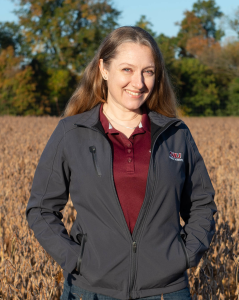
Dr Karla Gage
School of Agriculture and School of Biological Sciences
Southern Illinois University
Carbondale, IL
USA
Dr Karla Gage is an Associate Professor in the School of Agriculture and the School of Biological Sciences at Southern Illinois University, United States. She holds a Doctorate in Plant Biology (Weed Ecology) from Southern Illinois University Carbondale. Her primary research interests are devising herbicide-resistant weed management strategies and developing best practices in collaboration with farmers. Dr Gage has published over 30 journal articles, disseminated her research through more than one hundred conference and public presentations, and worked as an editor for Frontiers in Agronomy and the North Central Weed Science Society. In recognition of her work, Dr Gage has received many honours and awards as well as substantial funding.
CONTACT
W: https://academics.siu.edu/agriculture/crop-soil/faculty/gage-karla.php
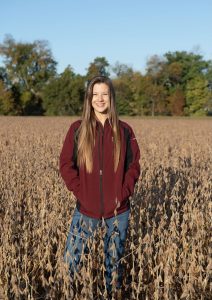
Madison Wozniak
School of Agricultural Sciences
Southern Illinois University
Carbondale, IL
USA
Madison Wozniak is a doctoral candidate at Southern Illinois University, with a specialist focus on Agricultural Sciences (Weed Science). Madison has previous experience as a Precision Agronomist and currently works as a Technical Service Manager for chemical manufacturer, FMC Corporation. She has given numerous outreach talks, sharing her research with scientists and farmers, and has already received several awards for her work. Madison is a member of the Weed Science Society of America and the North Central Weed Science Society.
CONTACT
W: https://www.fmc.com/en
KEY COLLABORATORS
Randy and Jeff Decker, Decker Farms, Indiana, USA
Garry and Dane Hunter, Hunter Farms, Illinois, USA
Ronald F. Krausz, Southern Illinois University, USA
Kirk Liefer, CH Farms, Illinois, USA
FUNDING
Sustainable Agriculture Research and Education (SARE), USA
FURTHER READING
RS Wilson, N Hooker, M Tucker, et al., Targeting the farmer decision making process: a pathway to increased adoption of integrated weed management, Crop Protection, 2009, 28(9),756–764. DOI: https://doi.org/10.1016/j.cropro.2009.05.013
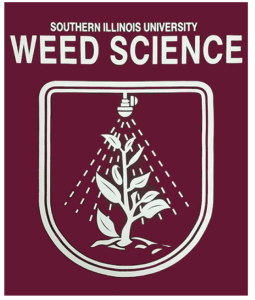


REPUBLISH OUR ARTICLES
We encourage all formats of sharing and republishing of our articles. Whether you want to host on your website, publication or blog, we welcome this. Find out more
Creative Commons Licence (CC BY 4.0)
This work is licensed under a Creative Commons Attribution 4.0 International License. 
What does this mean?
Share: You can copy and redistribute the material in any medium or format
Adapt: You can change, and build upon the material for any purpose, even commercially.
Credit: You must give appropriate credit, provide a link to the license, and indicate if changes were made.
SUBSCRIBE NOW
Follow Us
MORE ARTICLES YOU MAY LIKE
Dr Robert Larkin | Cultivating Change to Improve Soil Health and Increase Potato Yield
Environmental quality and food production are facing the pressing challenges of climate change and global population growth. Dr Robert Larkin from the United States Department of Agriculture-Agricultural Research Service (USDA-ARS) and a team of plant scientists developed and tested a range of crop management systems to help overcome these compounding challenges. Their work is improving soil health and increasing the yield of potato crops, contributing to the future food security of nations.
Dr Arne Stensvand | Thermotherapy: Effective Disease and Pest Management Without Chemicals
Dr Arne Stensvand and his team at the Norwegian Institute of Bioeconomy Research are developing physical methods of pest reduction in plants. The team is specifically interested in strawberry plants, for which pest management is vital for crop success. They are pioneering thermotherapy as a heat treatment method to provide an environmentally effective and economically sound non-chemical approach to pest management.
Dr. Daniel Canfield | Reprioritising Pollution Reduction in Florida’s Lakes
Florida’s landscape is dotted with thousands of lakes that reflect regional geology, topography and anthropogenic activities. Phosphorus and nitrogen are critical nutrients for maintaining the wide range of biological production expressed across Florida, but excessive inputs of these nutrients due to past human activities impair many waters. There has been a long history of work aiming to address associated water quality pressures, and Dr. Daniel Canfield at the University of Florida has been at the centre of these efforts for over 40 years. Now, with the correction of point-source nutrient inputs, Dr. Canfield proposes that holistic lake management, including the integration of in-lake management strategies with a focus on organic sediment removal, should be much more prominent on the US government’s agenda to provide faster restoration of stakeholders’ lake usability.
Dr Jon Tore Lieng | Dynamically Installed Anchors for Floating Offshore Turbines
Effectively harnessing offshore wind presents a valuable opportunity to increase energy supplies. Floating wind turbines present several advantages over traditional fixed turbines in more shallow waters. Dr Jon Tore Lieng from Deep Sea Anchors and colleagues have developed a type of dynamically installed anchor to hold the structures in place while reducing both the costs and complexity associated with installation where cohesive seabed sediments are realised.

